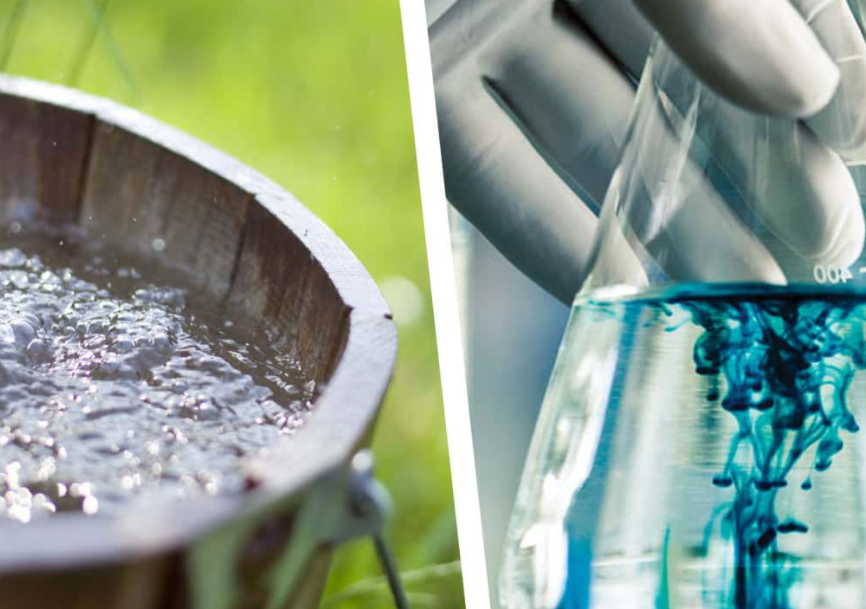Many people have talked about the detection method of anionic synthetic detergents in water. Before, we also introduced how to detect anionic surfactants in reclaimed water. When it comes to anionic synthetic detergents, everyone is also familiar with the cleaning methods that are often used in daily life. Essence, laundry detergent, etc. belong to this category.
The detection method of anionic detergents in drinking water is roughly the same as the detection method of reclaimed water. It also reacts methylene blue and anionic detergents in an aqueous solution to generate blue salts, and extracts the generated salts from alkaline methylene blue with chloroform. Then, the chloroform phase was back-extracted with an acidic methylene blue solution, and the extracted chloroform phase was subjected to color analysis at 650 nm.

Interference and elimination during detection
Negative interferences such as proteins other than the main analyte can be eliminated by alkaline methylene blue extraction, other organic sulfates, sulfonates, carboxylates, phenols and inorganic thiocyanates, cyanates, nitrates and chlorine Compounds, etc. interact with methylene blue to form a blue complex soluble in chloroform, resulting in a high measurement result, which can be eliminated by back-extracting the chloroform phase with acidic methylene blue.Reagents used for testing
1 Carrier solution: 0.4g/L. Available now.2 Methylene blue stock solution
Weigh 0.20 g of methylene blue and dissolve it in 50 mL of absolute ethanol, and dilute to a 100 mL volumetric flask with pure water.
3 Borate stock solution
Weigh 15.83g of sodium tetraborate decahydrate and 3.30g of sodium hydroxide, dissolve them in 800mL of pure water, and dilute to a 1000mL volumetric flask.
4 Alkaline methylene blue solution
Take 100mL of absolute ethanol and 35mL of methylene blue stock solution in 800mL of pure water, slowly add 100mL of borate stock solution, mix well and dilute to a 1000mL volumetric flask, filter before use. Store in a 4°C refrigerator for a week.
5 Acid methylene blue solution
Slowly add 6.8mL of concentrated sulfuric acid to 800mL of pure water, add 50mL of absolute ethanol and 7.5mL of methylene blue stock solution, add 50g of potassium dihydrogen phosphate, dissolve and dilute to a 1000mL volumetric flask, filter before use. Store in a 4°C refrigerator for a week.
6 Chloroform: degas with nitrogen for about 30min.
7 Standard stock solution of sodium dodecylbenzenesulfonate
Weigh 0.500g of pure sodium dodecylbenzenesulfonate, dissolve in pure water, and dilute to a 500mL volumetric flask.
8 Sodium dodecylbenzenesulfonate standard solution 1
Take 10 mL of standard stock solution of sodium dodecyl benzene sulfonate in a 1000 mL volumetric flask, and dilute to volume with pure water. Available now.
9 Sodium dodecylbenzenesulfonate standard solution 2
Take 10mL of standard stock solution of sodium dodecylbenzenesulfonate in a 100mL volumetric flask, and dilute to volume with pure water. Available now.
Instruments used for testing
1. Flow Injection AnalyzerAnionic synthetic detergent reaction unit and module, 650nm colorimetric detector, autosampler, multi-channel peristaltic pump, data processing system.
2. Glassware
Volumetric flasks and pipettes are grade A.
water sample treatment
Sampling and preservation The samples were in clean glass bottles, washed with methanol in advance, saturated with chloroform, and refrigerated in a 4°C refrigerator for 8 days. This method is used to determine dissolved anionic synthetic detergents in water samples. Before the determination, the water samples should be filtered through medium-speed qualitative filter paper to remove suspended solids.Detection steps
Preparation of standard series
1. When measuring drinking water and relatively clean surface water, absorb standard anionic synthetic detergent solution 1, 0, 0.20, 0.40, 0.60, 0.80, 1.00, 3.00 and 5.00mL and place them in 8 100mL volumetric flasks. Make up to volume with pure water. Its mass concentrations are 0ug/L, 20ug/L, 40ug/L, 60ug/L, 80ug/L, 100ug/L, 300ug/L and 500ug/L.2. When measuring domestic sewage, absorb standard liquid 2, 0, 0.20, 0.40, 0.60, 0.80, 1.00, 3.00 and 5.00mL of anionic synthetic detergent and put them in 8 100mL volumetric flasks, and make up to the mark with pure water. Its mass concentrations were 0mg/L, 0.20mg/L, 0.40mg/L, 0.60mg/L, 0.80mg/L, 1.00mg/L, 3.00mg/L and 5.00mg/L.
Test instrument operation
The relevant instrument operation can refer to its manual, enter the system parameters, determine the analysis conditions, and adjust the working conditions to the best state for measuring anionic synthetic detergents. For detailed operations, please refer to the instrument setting conditions.
Determination
After the flow path system is stable, measure the standard series and samples in sequence.The mass concentration of anionic synthetic detergent in the final water sample can be calculated according to the corresponding formula.

The above content comes from 《DB65/T 3950-2016 Determination of Anionic Synthetic Detergents in Water Quality by Flow Injection-Spectrophotometry》



